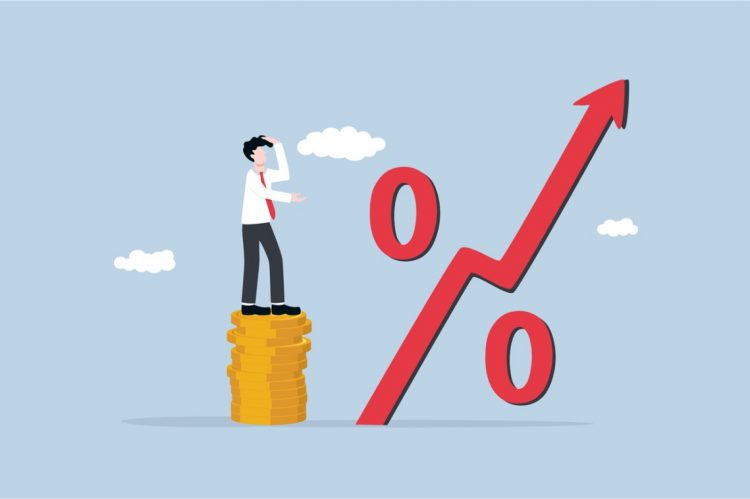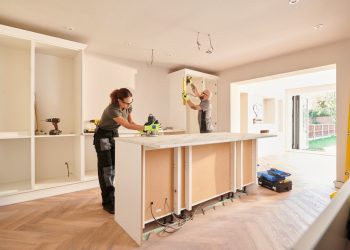National Association of REALTORS® (NAR) Chief Economist Lawrence Yun said the Federal Reserve’s most recent rate hike was unnecessary, and he expects the Fed will stop raising interest rates further, during the “Residential Economic Issues & Trends Forum” at NAR’s 2023 REALTORS® Legislative Meetings.
Yun discussed recent developments in the U.S. economy and their impact on the housing market. Robert Dietz, chief economist for the National Association of Home Builders, talked about the challenges that homebuilders continue to face and possible changes in the building sector. The forum closed with a panel discussion between REALTORS® Bobbi Howe and Maura Neill, who examined the current market conditions and challenges in their areas.
Key forecasts
The trajectory of rent growth
Yun explained that the Fed’s aggressive rate hikes have hurt regional banks and the housing market. While inflation has already started to calm, rents on apartments and single-family homes remain elevated.
“Inflation will not reignite – inflation will come down closer to 3% by the year’s end,” Yun stated. “Inflation has calmed down while rents are still accelerating.”
“Rent growth will decrease because apartment construction – entry units coming on the market – is already in the pipeline,” Yun added, noting apartment construction has reached a 40- to 50-year high. “We are already moving in the right direction towards consumer price inflation.”
In Dietz’s subsequent presentation, he agreed with Yun about housing supply and inflation.
“How do we solve the lack of inventory?” asked Dietz. “We’ve got to (build) more housing.”
He said that inflation is heading lower and the actions by the Fed since 2022 are working. Dietz added that we must build more affordable housing to tame inflation.
Home sales and price growth
Yun said that new home sales are back to pre-pandemic levels, but existing-home sales are historically low. Currently, housing inventory is down 40% compared to 2019. The housing market is being held back by the lack of housing inventory, a problem that existed before the pandemic.
“We have to stop the bleeding before improvement takes place,” he said. “We need to get more inventory, and the long-term solution is more home building.”
Yun explained that housing prices have run up dramatically because of the housing shortage but said recent price declines are temporary. While noting a wealth gap between the typical homeowner and renter, he also said the homeownership rate has increased slightly, which means that more Americans will experience wealth gains and long-term financial security.
“Home price increases are naturally good for homeowners,” stated Yun. “Everyone participates in wealth gains if you’re a homeowner.”
Yun forecasts that mortgage rates will fall closer to 6% in 2023 and go below 6% in 2024, while new and existing-home sales will bottom out in 2023 before an upturn in 2024.
Problems facing construction
Dietz highlighted the supply-side factors that pose a challenge for builders. Building materials costs have accelerated significantly. While the good news is that materials are 1-2% cheaper, the bad news is there is less demand for building, Dietz noted. High lumber prices have come down but that’s because demand for lumber has reduced.
There is a lack of labor for construction jobs. Acquisition, development and construction loans are very high – at 11-12%. By raising interest rates, the Fed made it more expensive to build and develop housing. Regulatory costs also inhibit housing inventory improvements.
“It’s death by a thousand cuts,” said Dietz. “It’s impossible to build entry-level housing when you’ve got – before putting a shovel in the ground – $200,000 in regulatory costs.”
From a construction perspective, Dietz stated that the remodeling market is the healthiest part of the building industry right now. He said that in the country’s housing stock, the average home is 41 years old. Dietz also stated that the custom-home building market has not declined; it’s gaining market share, and it had the best quarter of construction since the Great Recession. He said the market has cooled for single-family, built-for rent homes, however those will remain an important part of the ecosystem. The apartment market continues to be strong, and there are 950,000 apartments under construction.
Dietz forecasted that the Fed will ease interest rates in 2024 but not in 2023: “The back half of this decade looks really good.”
REALTORS® Speak
To close the event, Howe and Neill discussed opportunities in this real estate economy. Howe recommended taking emotion out of the equation and using the national-level data and breaking it down locally. Neill advised to come from a place of curiosity and keep in mind that national data needs to meet client needs. She also recommended coming from a place of abundance as opposed to scarcity in the context of high-interest rates.
For more information, visit https://www.nar.realtor/.












